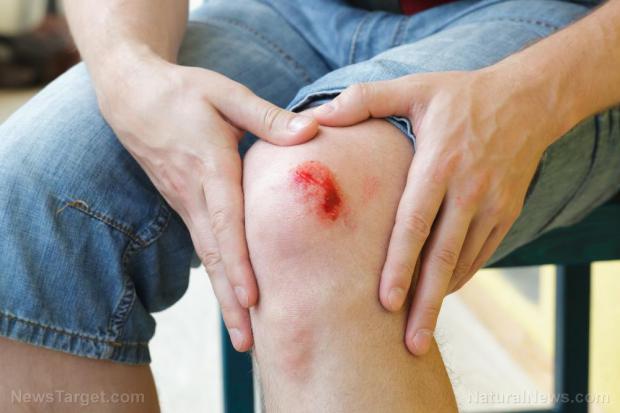
Breaking News
 Tether claims billions in profits as it grows 'secured loans'
Tether claims billions in profits as it grows 'secured loans'
 DC PANICS as Pam Bondi's Grand Jury CHANGES EVERYTHING!
DC PANICS as Pam Bondi's Grand Jury CHANGES EVERYTHING!
 Sydney Sweeney Ad Outrage & MAGA Memes: DNC Bankruptcy, Deep State Exposed! Trump 2025
Sydney Sweeney Ad Outrage & MAGA Memes: DNC Bankruptcy, Deep State Exposed! Trump 2025
Top Tech News
 3D printing set to slash nuclear plant build times & costs
3D printing set to slash nuclear plant build times & costs
 You can design the wheels for NASA's next moon vehicle with the 'Rock and Roll Challenge
You can design the wheels for NASA's next moon vehicle with the 'Rock and Roll Challenge
 'Robot skin' beats human reflexes, transforms grip with fabric-powered touch
'Robot skin' beats human reflexes, transforms grip with fabric-powered touch
 World's first nuclear fusion plant being built in US to power Microsoft data centers
World's first nuclear fusion plant being built in US to power Microsoft data centers
 The mitochondria are more than just the "powerhouse of the cell" – they initiate immune...
The mitochondria are more than just the "powerhouse of the cell" – they initiate immune...
 Historic Aviation Engine Advance to Unlock Hypersonic Mach 10 Planes
Historic Aviation Engine Advance to Unlock Hypersonic Mach 10 Planes
 OpenAI CEO Sam Altman Pitches Eyeball-Scanning World ID to Bankers
OpenAI CEO Sam Altman Pitches Eyeball-Scanning World ID to Bankers
 New 3D-printed titanium alloy is stronger and cheaper than ever before
New 3D-printed titanium alloy is stronger and cheaper than ever before
 What is Unitree's new $6,000 humanoid robot good for?
What is Unitree's new $6,000 humanoid robot good for?
 "No CGI, No AI, Pure Engineering": Watch Raw Footage Of 'Star Wars'-Style Speeder
"No CGI, No AI, Pure Engineering": Watch Raw Footage Of 'Star Wars'-Style Speeder
Treating wounds: How to recognize and prevent wound infection

(Natural News) Can you recognize a wound infection — and do you know how to prevent it? These tips can help you keep a wound from getting infected.
When a disease-causing microbe grows within the injured skin, it may lead to an infection. The person may notice red streaks and increased heat on the skin around the wound.
The wound may release discharge and have an unpleasant odor. In addition to discomfort, redness, and swelling, the patient may also experience pain, chills, fever, nausea, and vomiting.
Thankfully, if the wound is minor or if the infection is mild, the patient may treat himself at home. (Related: Sugar: Cheap, effective wound treatment with a long shelf life.)
How to treat wounds at home
To treat wounds effectively, make sure that all the medical supplies and tools you will use are clean, dry, and disinfected. This includes the hands — wash them with soap and warm water before drying them.
Spend a few minutes running warm water over the cut or scrape. Clean the skin around the wound with warm, soapy water. Remember to keep soapsuds out of the wound.
Check the wound for debris and dirt that may carry bacteria. A person may remove those interlopers with a clean tweezer or with careful and gentle strokes using a light, moist cloth.
Spread a small amount of antiseptic ointment or petroleum jelly over the wound. Let the skin air out and dry before dressing it with a bandage or gauze.
Replace the wound dressing at least once a day. If it gets dirty or wet, remove the bandage at once. Take the chance to wash the wound with care before re-covering it.
Avoid applying chemicals that may irritate the skin and aggravate the wound. Hydrogen peroxide, iodine, and some antiseptic ointments are common examples of these.
We are all guilty of picking scabs, but doing so makes the injured skin more likely to develop scars. It also slows down the recovery process and may even cause infections.
Visit a health care provider if a wound fails to heal within one or two days.
Preventing wound infections
The first thing anyone must do to avoid infection is to disinfect a wound and keep it clean. Even if the cut or scratch is small, people must clean it as soon as possible.
Start the disinfection process by pouring clean water over the wound for several minutes. Next, wash the skin surrounding the wound with warm water and soap.
In the absence of clean water, alcohol wipes will suffice.

 Anonymous Email Forwarding
Anonymous Email Forwarding 

